Myeongdong
 |
Taxi : 26 Mins(7km)
|
||
| Myeongdong is one of the primary shopping districts in Seoul. The two main drags meet in the center of the block with one beginning from Myeongdong Subway Station (Seoul Subway Line No. 4) and the other from Lotte Department Store at Euljiro. Many brand name shops and department stores line the streets and alleys. Common products for sale include clothes, shoes, and accessories. Unlike Namdaemun or Dongdaemun, many designer brands are sold in Myeongdong. | |||
Itaewon
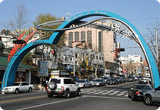 |
Taxi : 31Mins(9.71km)
|
||
| Itaewon is a popular tourist and shopping destination for foreigners who visit Korea. There are over 2,000 stores clustered together with shopping centers, shops selling clothes, shoes, and bags, restaurants, recreation facilities, trading companies, travel agencies, and tourist hotels. The many English signs and many foreigners will make you feel as if you are in not in Korea. | |||
Namdaemun Market
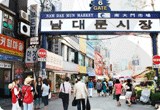 |
Taxi : 27Mins(6.83km)
|
||
| Opened in 1964, the Namdaemun Market is the largest traditional market in korea with various goods in store. All products are sold at affordable prices and the stores in this area also function as a wholesale markets. | |||
Dongdaemun Market
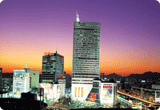 |
Taxi : 40Mins(8.04km)
|
||
| The Dongdaemun Shopping Complex is one of Korea’s most representative markets and was founded on December 23, 1970 as the largest of its kind in Asia. In December of 1985, the Dongdaemun Shopping Town was established, and now the area encompasses five buildings in total (A, B, C, D, and the Shopping Town). There are over 5,000 shops located in this district, selling various fabrics, materials, accessories, wedding products, and more. The fabric and clothing here are of the latest fashion trends in the world. Inventory is imported and exported in real time, making Dongdaemun a must-visit fashion market for everyone. | |||
Insa-dong
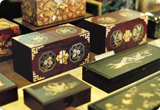 |
Taxi : 22Mins (5.88km)
|
||
| Insa-dong , located in the middle of the city, is an important place where old but precious and traditional goods are on display. There is one main road in Insa-dong with alleys on each side. Within these alleys are galleries, traditional restaurants, traditional teahouses, and cafes. | |||
Hongdae(Hongik University Street)
 |
Taxi : 17 Mins (4.04km)
|
||
| Hongdae-ap (the area in front of Hongik University) is a neighborhood known for its youthful and romantic ambience, underground cultures, and freedom of self-expression. Unique cafes, cozy galleries, accessory stores, fashion shops, live cafés and clubs, art markets, and gourmet eateries make this a popular hang-out for locals in their 20s and 30s and a fascinating place to walk around. | |||
Ewha Univ.&Shichon
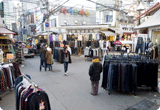 |
Taxi : 19 Mins (4.74km)
|
||
| Located in Northwest Seoul, Sinchon is home to a number of private universities, earning the area its nickname ‘University Streets of Sinchon’. In particular, the street between Sinchon Station (Subway Line 2) and Edae (abbreviated for Ewha Women’s University) is a shopper’s paradise, offering a wide range of styles and prices. The collection of trendy stores, bars, and delicious cuisine draws out throngs of college students and other freethinkers year-round, making this one of the most creative and energetic places in the city. | |||
Seonyudo Park
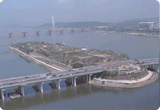 |
Taxi : 17 Mins (9.04km)
|
||
| Seonyudo Park in Yangwha-dong is one of Seoul's most famous parks. Connected to the mainland by a beautiful, arching bridge, the island was once an area of industry. | |||
Bukchon Hanok Village
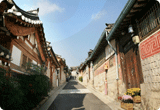 |
Taxi : 31 Mins (6.35km)
|
||
| Surrounded by Gyeongbokgung Palace, Changdeokgung Palace and Jongmyo Shrine, Bukchon Hanok Village is home to hundreds of traditional houses called 'hanok' that date back to the Joseon Dynasty. The name, 'Bukchon,' which literally translates to 'northern village,' came about as the neighborhoods that the village covers lie to the north of the two significant Seoul landmarks, Cheonggyecheon Stream and Jongno. Today, many of these hanoks operate as cultural centers, guesthouses, restaurants and tea houses, providing an opportunity to experience, learn and immerse in Korean traditional culture. | |||
Gyeongbokgung Palace
 |
Taxi : 29 Mins (5.91km)
|
||
| Built in 1395, Gyeongbokgung Palace is also commonly referred to as the “Northern Palace” because it is the furthest north when compared to the neighboring palaces of Changdeokgung (Eastern Palace) and Gyeongheegung (Western Palace). Gyeongbokgung Palace is arguably the most beautiful and remains the grandest of all five palaces. | |||
Cheonggyecheon Stream
 |
Taxi : 27 Mins (6.75km)
|
||
| Until it was restored in 2005, Cheonggyecheon Stream existed only as a neglected watercourse hidden by an overpass. Today, it has been transformed into a haven of natural beauty amidst the bustle of city life. | |||
Deoksugung Palace
 |
Taxi : 26Mins(6.12km)
|
||
| Located at the corner of Seoul's busiest downtown intersection, Deoksugung Palace is famous for its elegant stone-wall road. It is also the only palace that sits alongside a series of western style buildings that add to the uniqueness of the surrounding scenery. | |||
Changdeokgung Palace and Huwon
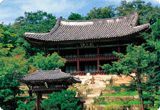 |
Taxi : 22Mins(6.95km)
|
||
| Changdeokgung Palace was the second royal villa built following the construction of Gyeongbukgung Palace in 1405. It was the principal palace for many of the Joseon kings and is the most well-preserved of the five remaining royal Joseon palaces. The palace grounds are comprised of a public palace area, a royal family residence building, and the rear garden. Known as a place of rest for the kings, the rear garden boasts a gigantic tree that is over 300 years old, a small pond, and a pavilion. | |||
Changgyeonggung Palace
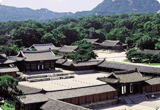 |
Taxi : 23Mins(7.41km)
|
||
| Located in the heart of Seoul, Changgyeonggung Palace was first built by the 4th ruler of the Joseon Dynasty, King Sejong (r.1418-1450), for his retiring father, King Taejong. It often served as residential quarters for queens and concubines. During the reign of King Seongjong (r.1469-1494), the palace was renovated and renamed to Changgyeonggung Palace. It later became a park with a zoo and a botanical garden during Japanese colonial rule. The palace was then relocated in 1983 and regained its old graces after years of restoration. | |||
















































